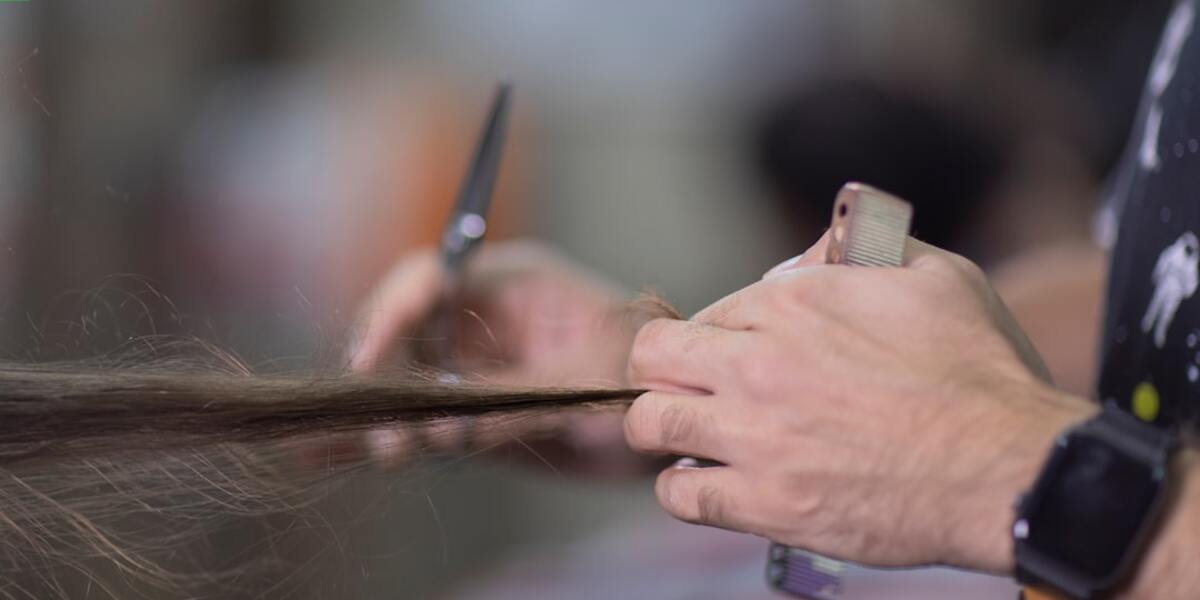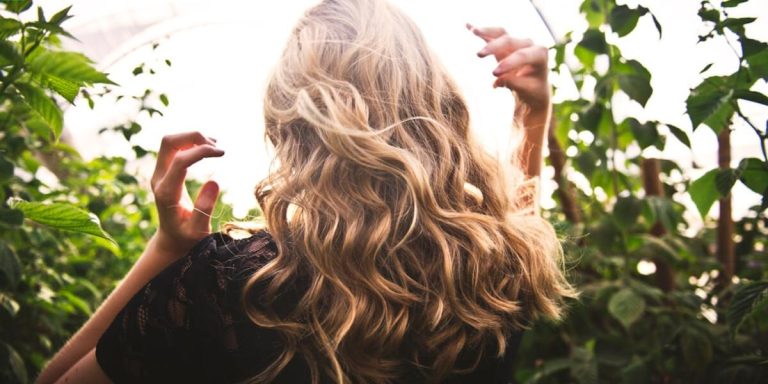Indian Hair Care Routine: A Guide to Lustrous and Healthy Locks
Embracing an Indian hair care routine can be a transformative journey towards lustrous and healthy locks. Characterized by its focus on natural ingredients, deep conditioning processes, and intricate massage techniques; the traditional practices of India present some unique and effective solutions to numerous common hair issues.
Understanding these ancient methods is not just about achieving longer or shinier tresses. It’s also about learning how every element in this regimen contributes synergistically to the overall health of your scalp and strands. Whether you’re grappling with problems like dryness, breakage or want to invigorate sluggish growth – adopting elements from an Indian Hair Care Routine may offer a fruitful alternative approach.
Did you know?
In traditional Indian hair care, the herb ‘Bhringraj’ is considered as a miraculous ingredient. Known for promoting growth and reducing graying, it’s often termed the “king of herbs” in Ayurvedic practice.
Understanding the Basics of an Indian Hair Care Routine
With a rich tradition steeped in natural beauty and wellness, India has long been the epicenter of effective holistic hair care methods. The routine that Indian people follow is not just about maintaining their locks but nourishing them from root to tip. This methodology integrates various aspects including diet, lifestyle changes, and powerful topical applications.
The fundamentals of an Indian Hair Care Routine are anchored on two mainstays – oiling and herbal treatments. Oiling or ‘champi’ as it’s popularly known in India forms the crux of any traditional haircare regimen here. Natural oils like coconut, almond or mustard are massaged into the scalp regularly to stimulate blood circulation thereby ensuring healthy growth while adding shine and strength.
On the other hand shines through ancient ayurvedic practices involving potent herbs such as henna for coloration & conditions; Amla (Indian Gooseberry) boasting high vitamin C content promoting healthier scalps; Shikakai often dubbed as “fruit for hair” used extensively for its cleaning properties.
Understanding this tried-and-tested framework can be insightful especially when navigating towards achieving incredibly lustrous mane everyone desires today with increasing environmental stressors at play! Thanks to a consistent adherence across generations bearing testament due its effectiveness – picking up some tips right off this centuries-old yet relevant system could be your next step towards enviable tresses stepping foot into 2023.
The Role of Natural Oils in Nourishing Indian Hair
In the realm of an Indian hair care routine, natural oils hold a significant position. Acting as powerhouses for nourishment and moisturization, these traditional skincare remedies have been passed down from generation to generation.
There’s no denying – much like spices in India’s famed culinary tradition, diversity is key when it comes to the selection of natural oils used in nurturing strong and lustrous locks. Coconut oil gets universal recognition due to its deep penetrating capabilities that strengthen hair roots. But other gems such as almond oil and olive oil are also extensively utilized.
Almond oil contributes significantly towards treating dandruff while adding shine because notable amounts of vitamin E present in this divine elixir promotes healthy growth along with contributing toward scalp health. On similar lines, Olive Oil too has commendable anti-inflammatory properties which soothe and heal your scalp ensuring fewer issues with dryness or itchiness.
Ayurvedic Practices for Scalp Health and Stronger Strands
Ayurveda, an ancient medical science from India, is deeply intertwined with holistic wellness culture. In terms of hair maintenance, it primarily focuses on nourishment from within by relying heavily on natural herbs.
A staple in any Indian Hair Care Routine includes oil treatments using ‘Bhringraj’ or the Eclipta Alba plant extract mixed with sesame oil. Apart from stimulating blood circulation in your scalp for healthy growth patterns; this practice keeps those annoying dandruff issues at bay too! Another secret weapon?
Amla or Indian Gooseberry which naturally conditions your tresses while also combating premature graying effectively; thus stopping time for your locks!
Furthermore, cleansing routines get a significant boost when Reetha (Soap Nuts) & Shikakai are included — gentle yet powerfully efficient cleansers that don’t strip away beneficial oils like conventional shampoos do.
Speaking about hydration – no conversation can be complete without mentioning Hibiscus flowers’ role (also called “gudhal”). Packed with Vitamins C & E coupled up antioxidants – these wonder blooms topped off concoctions meant for deep conditioning therapies since ages back home.
Customizing Your Indian Hair Care Regimen for Different Hair Types
Understanding your hair type is the first step towards creating a personalized Indian hair care routine. Over the centuries, India’s gloriously diverse population has inherited and developed an array of distinctive hair types and textures – from silky straight strands to bouncing waves, from resilient curls to tight coils.
The beauty secret behind managing these different tresses lies in adopting traditional practices finely tuned for each hair type. The wisdom of Ayurveda plays a key role here; potent herbal concoctions such as henna masks for conditioning or Amla oil massage for strengthening roots have been used by generations and cater beautifully to differing needs.
To effectively customize an Indian hair care regimen, take advantage of locally available natural ingredients. Nourish dry, parched locks with coconut milk, almond oil, and curry leaves. Treat oily scalps with lemon juice or neem extract. Pairing knowledge about one’s own hair with traditional expertise enables the creation of an ideal regimen that addresses specific concerns such as dandruff, premature graying or breakage.
Identifying Your Unique Hair Type: From Straight to Curly
Understanding the texture and quality of your hair is an integral part of devising a perfect Indian hair care routine. It’s important to realize that every individual has unique characteristics when it comes to their locks, varying from straight to curly.
If you have straight hair, you’ll observe that it tends to be glossy due its structure which allows natural oils from the scalp easily trail down your strands. Straight hair generally needs less moisturizing products but more frequent washing as these oils can make the hair appear greasy over time.
Wavy-haired individuals fall somewhere in between those with straight and curly tresses. This type features S-shaped waves starting mostly mid shaft through ends while roots stay rather flat. A balanced regimen keeping moisture intact without weighing down is essential for wavy manes.
Then there are folks who boast curlicues sprouting right up from their scalps: welcome to team Curly! For this category, finding appropriate hydration level forms a crucial part of any Indian Hair Care Routine since curls’ coiled shape prevents distribution of sebum thoroughly thus leading towards dryness at length.
For kinky or coily haired people having tightest curl pattern among all types; addressing dryness again plays mainstay owing to similar reasons as stated above for ‘curly’. Also one must take particular caution about breakages arising out thermal/chemical treatings plus being gentle during detangling sessions will prove beneficial too!
Tailoring Herbal Treatments and Masks to Your Hair’s Needs
Understanding the unique needs of your hair type is essential in creating an effective Indian hair care routine. Herbal treatments and masks, being a significant part of traditional Indian hair care regimen, can be tailored to best suit those specific requirements.
To start with, one should identify their primary hair concern. If you’re grappling with dry and brittle strands, then hydrating natural ingredients like Aloe Vera or Honey can be excellent for crafting homemade masks. For instance, mixing equal parts of Honey and Coconut oil creates a highly moisturizing mask that’s perfect for parched locks.
On contrary if oily scalp poses problem then including herbal remedies such neem leaves into your indian hair care routine might help control excess sebum production effectively without stripping off needed oils from roots completely unlike chemical loaded commercial products available these days!
Then comes henna which considered holy grail ingredient amongst Indians not just only because imparts beautiful reddish tint after application instead has been known centuries provide deep conditioning making each strand stronger inside out thereby preventing breakage common issue faced majority people worldwide today when they follow other often marketed “quick fix” methods rather than sticking something tried tested old simple grandma’s recipes!
Daily Habits That Enhance Traditional Indian Hair Maintenance
Embracing the traditional Indian hair care routine in your daily regimen can significantly enhance the overall health and appearance of your hair. Richly steeped in Ayurvedic practices, this holistic approach not only rejuvenates tired tresses but also nourishes them from within to impart a natural glow. The use of time-honored ingredients like Amla, Bhringraj, Hibiscus and more promote stronger roots by deeply penetrating into scalp tissues and revitalizing damaged strands.
To weave these rituals into your everyday life in 2023 isn’t as daunting as it may seem at first glance. In fact, with a little diligence it becomes part of an enjoyable self-care practice that’s relaxing yet rewarding on many levels. From oil massages using invigorating brews infused with potent herbs to indulging in homemade protein-packed masks – every aspect contributes towards fuller thicker locks bursting with vitality.
The secret lies undoubtedly in its impeccable balance of life-giving elements found abundantly across India’s diverse landscapes. These elements possess unique healing properties that, when harnessed effectively, yield stellar results for any type or texture of hair. So whether you aim to manage dryness or combat humidity-induced frizz, adopting age-old wisdom that centers around treating nature’s gifts with respect will surely bring benefits worth cherishing forever.
Incorporating Gentle Cleansing Techniques into Daily Use
Gentle cleansing techniques have been the cornerstone of a traditional Indian hair care routine for centuries. These methods, passed down through generations, continue to ensure healthy and robust tresses even in our contemporary settings.
The first step involves using natural oils before washing your hair. Pre-shampoo treatments with coconut or almond oil are highly popular as they help achieve smoothness while protecting the strands from harsh chemicals found in shampoos.
a milder shampoo aids by removing dirt without compromising on nourishment levels within your scalp and locks.
Balancing Nutritional Intake for Optimal Hair Growth
The Indian hair care routine doesn’t only revolve around topical treatments and specific methods of washing or styling. It also involves the careful attention to your nutritional intake. Here is how you can balance it for optimal hair growth.
Primarily, proteins play an essential role in maintaining strong and healthy hair strands as they are the building blocks of our tresses themselves. With traditional Indian diet being rich in lentils, chickpeas, dairy products like milk and yogurt; ensure these form significant parts of your everyday meals.
Next on this list are Vitamins A & C that aid collagen production crucial for hair strength. Include plenty of citrus fruits along with leafy greens such as spinach or kale which pack a Vitamin A punch too! Not forgetting Beta-Carotene from carrots – another nutrient vital to supporting overall scalp health!
Omega-3 fatty acids should not be overlooked either when considering an ideal indian hair care routine – these promote hydration keeping each strand well-moisturized thus reducing brittle ends immensely! Flaxseeds make an easy addition into various foods while fish options (if not vegetarian) provide excellent sources.
Last but most certainly powerful is Biotin known widely for its impact towards faster-growing locks! Rich natural biotin food sources include nuts: almonds especially rival even supplements sold over market counters today!
Conclusion
In summary, investing time and effort into a proper Indian hair care routine is the secret recipe to lustrous and healthier locks. Having traveled through the essence of traditional oil massages, herbal shampoos, natural conditioners – we hope this guide has shed light on why India leads in upholding luxuriant manes.
As you continue your personal journey towards achieving healthy hair, don’t forget that knowledge continuous growth too! Explore more tips & techniques about “Hair Care and Maintenance” around our website. Let’s keep those tresses looking stunning with divulged beauty secrets from all corners of the world at your fingertips!







